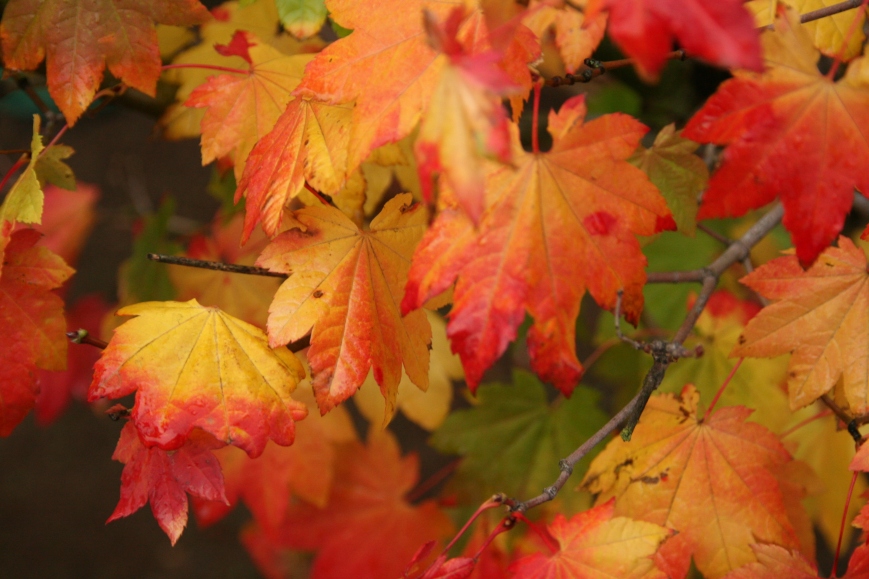There is a magical place that comes alive every winter, not far from Portland. And, fortunately for any local sightseers it is conveniently located right off of I-5, just southeast of Ridgefield Exit 14. It’s hard to build mystery and anticipation for your reader when your creative subject line is so telling, but yes, I’m talking about a stand of willow trees. Not your idea of exciting? Maybe it takes a certain kind of person to get excited about willows, but this beautiful bark just amazes me, and I’m sure all can appreciate it:
Look how much this tree stands out against the drab backdrop of alders:
As best as I can tell (without being able to examine one up-close, being on private property), these are Pacific Willows (Salix lasiandra), or a type of one. The bright, yellow-orange stems really helped aid in identification, or supposition, to be accurate. Since there are around 400 species from the genus Salix, (200+ in cultivation, not counting cultivars), it’s hard to know if you’ve narrowed down that list enough for a definitive answer when trying to identify one, especially since they are cross-fertile plants, often creating hybrids. I like what OSU’s site has to say about willows:
“As a group, willows are easy to identify – in fact, pussy willows are one of the first trees that many of us learn. But distinguishing between different types of willows, is a different story. The reason is that there are so many willows – North America has approximately 90 different types – and that many of the species interbreed, with the offspring having characteristics of both parents. As a result, most people are satisfied knowing that a tree is a willow, and leave it at that.”
Even with all that family competition, these willow trees really stand out from most others that I’ve seen. Just imagine this below stand of willows planted with large drifts of our native Red-twig Dogwood (Cornus sericea, syn. Cornus stolonifera), shown here in a previous post. Red-twig, or Red Osier, Dogwoods share very similar cultural requirements (loving themselves a riparian area) and would not only provide striking bark contrast, but they would also work great proportionately as a foreground plant to these willows, only coming up to about half of their height.
In general, willows are rather susceptible to pests and diseases, and branch breakage can also be a relatively common occurrence (however, they also re-sprout and re-root easily), but they also come with many benefits which I believe easily outweigh the negatives if you have a large, moist to wet, natural area for them. Native, riparian willows like these can help provide soil/waterway stabilization with their extensive, fibrous root systems, improve shoreline and aquatic habitat by offering food, shelter and shade (the shade helps reduce temperatures in nearby waterways improving the conditions for many fish), improve water quality, grow quickly to establish a natural screen, and lend a relatively fine texture and movement to a landscape. Also, the early spring flowers not only add interest to the garden, but are also a great early nectar source for our bees.
I wish we had the room for a few of these willows in our yard, but 6,000 square feet is not going to cut it. Better add a larger yard to the Christmas list…








